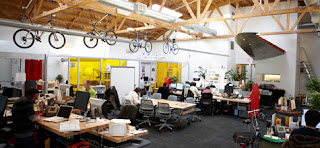During the course
of this module, we watched a documentary, “Inside IDEO”, a design firm based in
Palo Alto, California. This documentary introduced a concept which we revisited
often during the module: “fail often to succeed sooner”.
Watching this
documentary, reminded me of personal work-related experiences working with design
teams, in that the IDEO workplaces appeared chaotic and that everyone, no matter
their experience or seniority in the business, had an equal say in the design
process. As David Kelly, founder of IDEO stated, “it is unlikely that the boss
will always have the great idea”. In IDEO, status arises from those with the
best ideas, not those in the company the longest or those with superior
experience.
What I learned
most from watching this documentary, was the businesses approach to failure. My
prior experience would suggest that failure is something which is discouraged
and something which should not be reflected on and instead, “swept under the
carpet”. Those at IDEO, in contrast encourage
failure and see it as a learning experience. In the documentary, we see that instead
of disregarding failures, they keep each failed invention.
Watching this
documentary, taught me the importance of prototypes. This is something which
was also encouraged in the Game Thinking module I had previously taken. After
the team had narrowed down their designs to a few options, the team were split
up into smaller groups, to each build a mock-up of each idea so as to bring the
idea to life. Having a tangible prototype of each of the ideas, aided the
overall team in refining features and selecting the best option for the problem
at hand: redesigning the traditional shopping cart.

Comments
Post a Comment